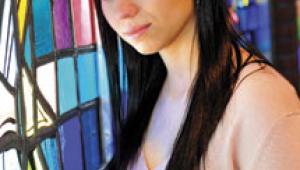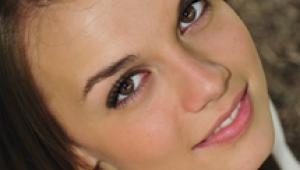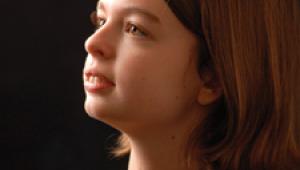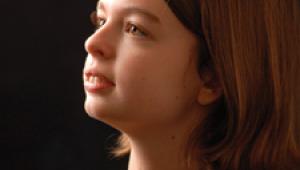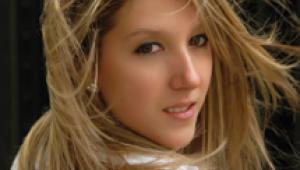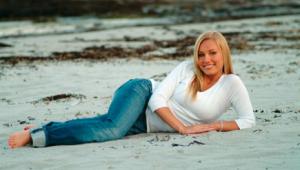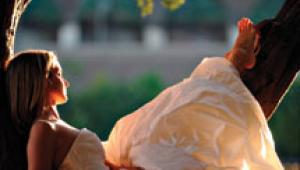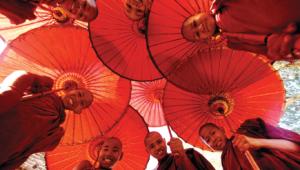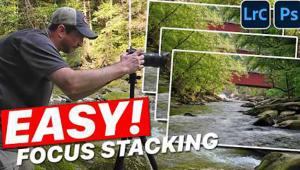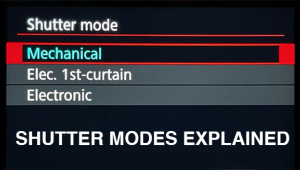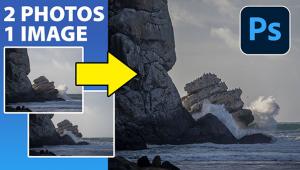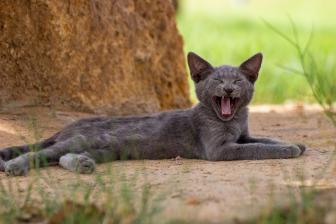Natural Light Portraiture; Why One Photographer Loves The Sun!
For years photographers have extolled the virtues of taking portraits on overcast
days or during the "sweet light" that occurs near the beginning
and end of every day. On cloudy days, the contrast range is reduced, allowing
you to capture detail throughout the image, from the brightest area to the deepest
shadow. Near sunset, you also get a reduced contrast range, with the added benefit
of directional lighting, a wonderful bonus. And while I won't argue that
the beginning and "tail end" of each day's light offers us
perhaps our best lighting conditions, I can tell you that I actually prefer
sunny days to cloudy ones when shooting. Here`s why:
Like most photographers, I have to shoot all day. I can honestly tell you that
I don't care if I have a session at 9am or noon, I can make the light
work. One more thing I should tell you: I never use a flash outside in individual
portrait work. I use a reflector perhaps 5 percent of the time, usually when
it's cloudy, and I'll use a "gobo" to block splotchy
light, but only occasionally. Most of the time, it's just me, my camera,
and a light meter.
 |
|
|
It's not that this is the only way to shoot. You can use flash outside,
and for weddings always carry a flash. With portraits, if I use a flash, I want
it to be on a light stand with a softbox, acting as a main light. "Fill
flash" requires a very precise amount of fill or the result looks unnatural.
Add to that the fact that I am usually working very quickly and it's easy
to see why I have learned to "see" my light. That's what I
did on a typical senior portrait recently.
The Studio
I don't have a special outdoor area for shooting. My studio is located
right in the middle of a small (25,000, big for New Hampshire) town. I'm
in a big old building with no place for an outdoor shooting area. So I walk
out the front door and the town becomes my outdoor studio. Like anyone who's
been in business longer than six months, I've learned to make a disadvantage
an advantage. Come to my studio and you won't see the same background
that's in everyone's photos--it all depends on lighting conditions
and time of day. I tell clients we're going to go on a little adventure
and find some nice spots for them. We have a great time!
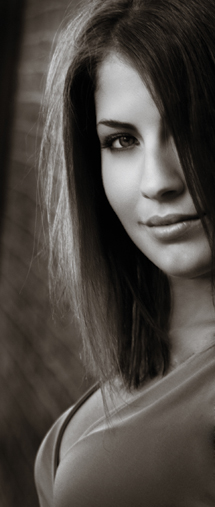 |
The Light
Once we leave the studio, the first thing I do is check out the light. If it's
overcast, I know my strongest light is directly overhead, so I'm either
going to have to block it somehow or "add" some back in with a reflector.
I'm very picky about having light in the eye, although it doesn't
always have to be at 10 or 2 o'clock. I do need a sparkle in there though,
and I won't add it with a flash. Perhaps it's just personal preference,
but I like a very natural look in my portraits, and I'd rather find good
lighting conditions then try to shape them with external forces. Let's
assume we've got a brilliant sunny day with no clouds and see what we
can find.
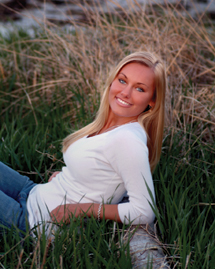 |
|
|
The Sun: Advantages
I'm a self-proclaimed sun lover. When I use the sun, I feel I am harnessing
its power, and carefully shaping it, to create a wonderful portrait. Portraits
taken using sunlight have a wonderful energy and color that is not attainable
on cloudy days. You can also get a great light in the eye that makes them really
sing. I call this combination of forces "sparkle light" and I love
using it.
